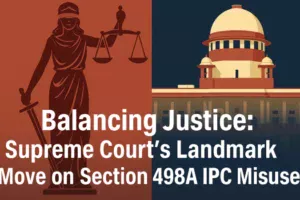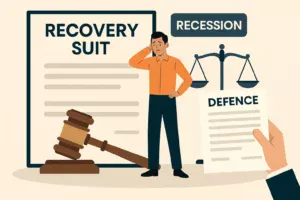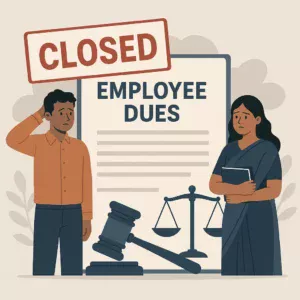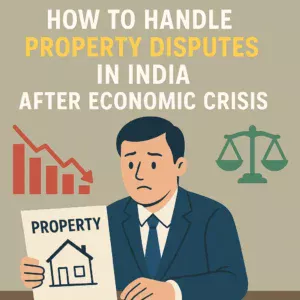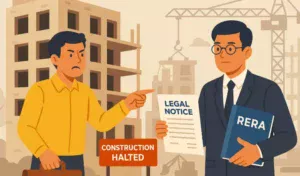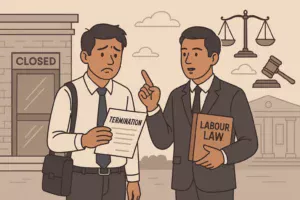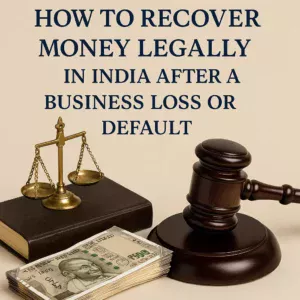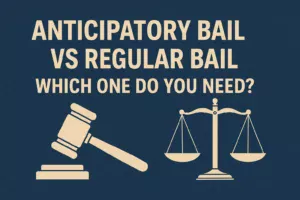In the quiet sadness of saying goodbye, where two paths diverge after walking together, there’s now a new way to part: Mutual Divorce Through Video Conferencing (V.C).
Instead of facing each other, now screens mediate the end of a journey once shared. It’s like watching a movie of your own life slipping away, all through the clicks and taps of technology
Introduction
Mutual Divorce Through Video Conferencing is a solution that we get through use of modern technology.The concept of divorce has evolved significantly over the years, transitioning from a stigmatized event to a more accessible and amicable process. In recent times, the advent of technology and the widespread use of video conferencing have ushered in a new era for divorce proceedings. Mutual divorce through video conferencing is a modern solution to a sensitive issue that offers several advantages, making the process more convenient and efficient for couples seeking to part ways amicably.
The Rise of Mutual Divorce
Mutual divorce, also known as uncontested divorce, occurs when both spouses agree to end their marriage and reach an understanding on the terms of the divorce, including property division, child custody, and financial matters. This amicable approach to divorce is often seen as a more civilized and emotionally less taxing alternative to contested divorces, which can be emotionally draining and expensive.
Role of Video Conferencing
Video conferencing has become an integral part of our lives, especially since the COVID-19 pandemic accelerated its adoption for various purposes, from business meetings to social gatherings. Its applications are continually expanding, and one area where it is making a significant impact is in the legal sector, particularly in divorce proceedings. In Indian courts, divorce is now possible through video conferencing.
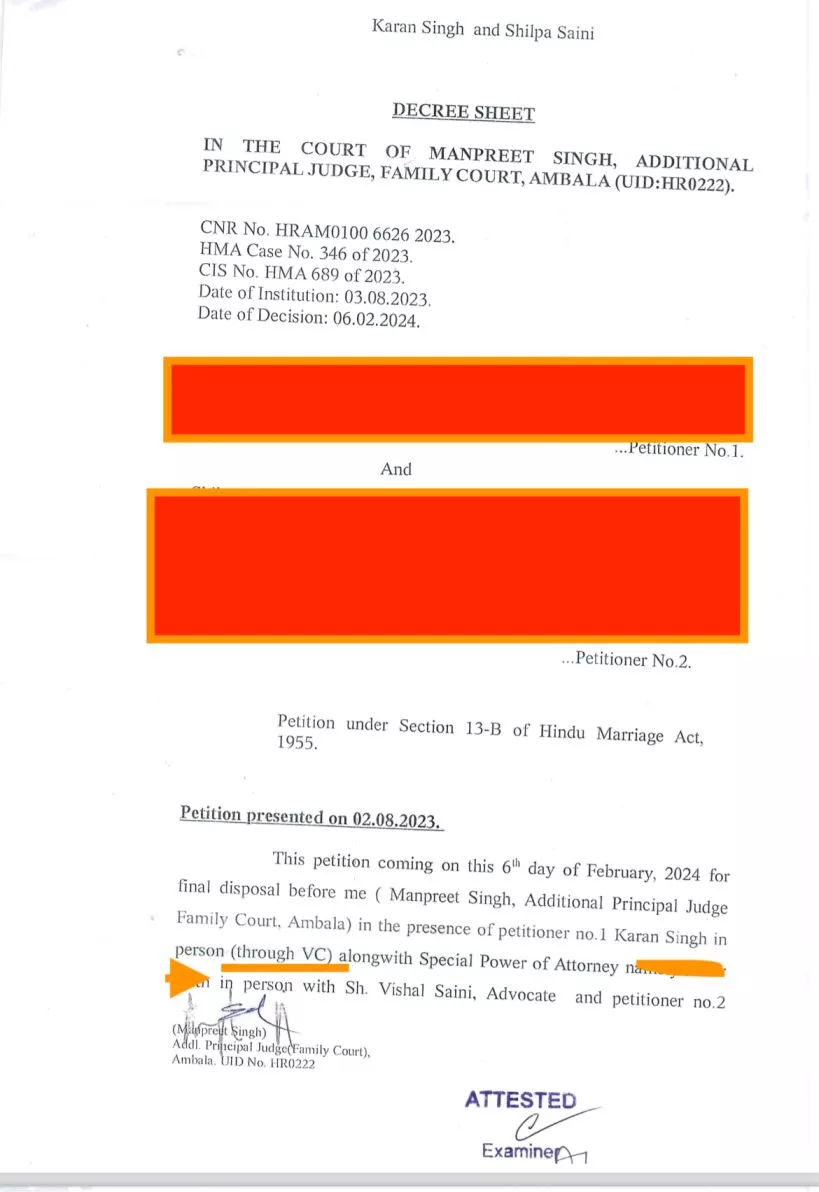
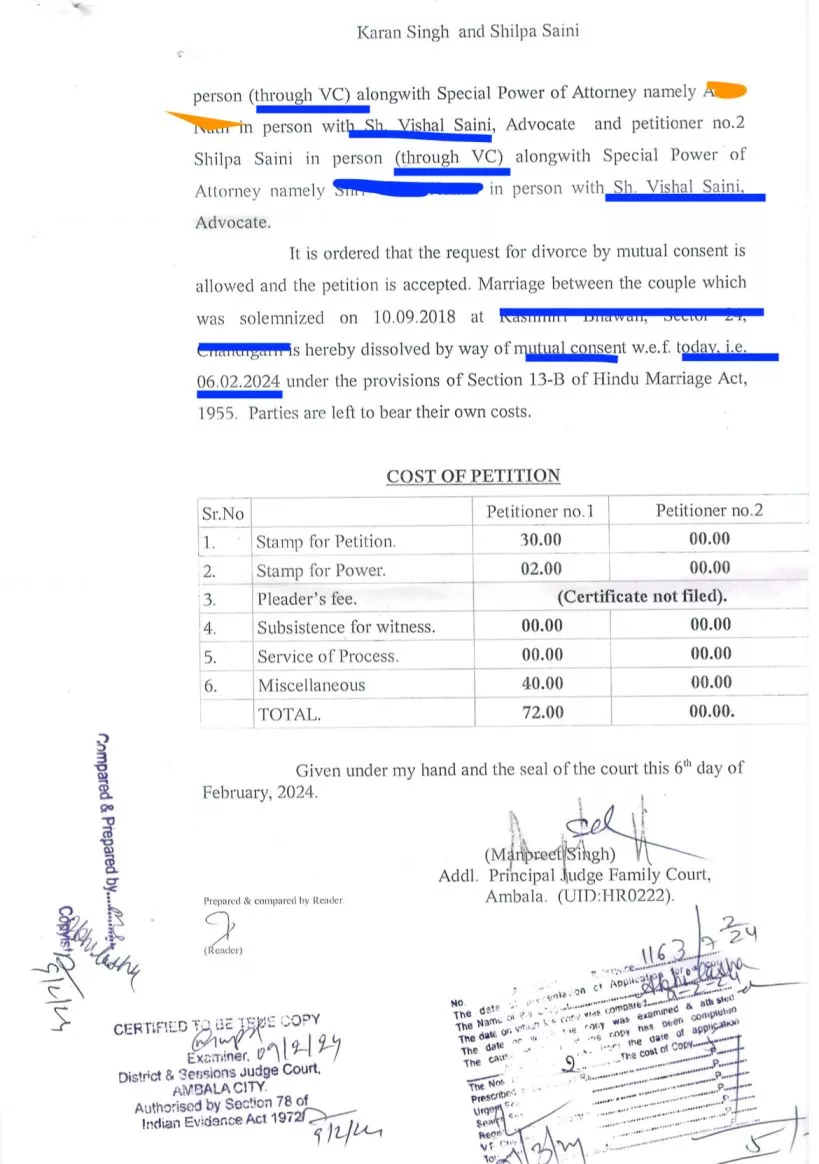
Advantages of Mutual Divorce Through Video Conferencing
- Convenience: One of the most significant advantages of mutual divorce through video conferencing is the convenience it offers. Couples no longer need to physically appear in court, saving them time and reducing the logistical challenges associated with traditional divorce proceedings. This is especially beneficial for couples residing in different locations or those with busy schedules.
- Privacy: Video conferencing allows couples to maintain their privacy during the divorce process. They can have their discussions from the comfort of their own homes or private offices, eliminating the need to appear in a public courtroom. This can help reduce the stress and anxiety associated with traditional divorce proceedings.
- Cost-Effective: Traditional divorces can be costly, with legal fees, travel expenses, and other associated costs. Video conferencing reduces these expenses, making mutual divorce a more affordable option for many couples.
- Flexibility: Video conferencing offers flexibility in scheduling meetings and discussions. Couples and their legal representatives can work around their schedules, making it easier to coordinate and come to an agreement.
- Reduced Conflict: The more relaxed and private setting of video conferencing can help reduce conflict during divorce proceedings. This can be particularly beneficial for couples who want to maintain an amicable relationship, especially when children are involved.
Mutual Divorce Through Video Conferencing: A Modern Solution to a Sensitive Issue
Mutual Divorce Through Video Conferencing Legal Considerations
While mutual divorce through video conferencing offers numerous advantages, it’s important to consider the legal aspects. In India Mutual divorce can also happen through video conferencing but Special power of attorney is required for same.
For couples, Mutual Divorce is a simple way to obtain separation from each other. It is the best method to dissolve their marriage.
Divorce by Mutual Consent or Mutual Divorce is the term used when a couple, i.e., a husband and wife, mutually agree to end their matrimonial relationship with mutual consent. They decide that they can no longer live together, making Mutual Divorce the best option for dissolving their marriage.
The Hindu Marriage Act provides the provision for mutual divorce for Indian couples. Section 13-B of the Hindu Marriage Act states:
13-B. Divorce by mutual consent.
(1) Subject to the provisions of this Act, a petition for the dissolution of marriage by a decree of divorce may be jointly presented to the District Court by both parties to a marriage, whether the marriage was solemnized before or after the commencement of the Marriage Laws (Amendment) Act, 1976. The ground for this petition is that they have been living separately for a period of one year or more, they cannot live together, and they mutually agree that the marriage should be dissolved.
(2) On the joint motion of both parties made earlier than six months after the date of presenting the petition referred to in sub-section (1), and not later than eighteen months after the said date, if the petition is not withdrawn in the meantime, the Court shall, upon being satisfied after hearing the parties and making such inquiries as it deems necessary, that a marriage has been solemnized and the averments in the petition are true, pass a decree of divorce, declaring the marriage to be dissolved with effect from the date of the decree.
Legal Precedents on Mutual Divorce Through Video Conferencing
Generally, the process of obtaining a divorce is not straightforward and easy in India, as divorces are still considered a social stigma. Every effort is made to preserve the marriage. Therefore, during the divorce process, parties are encouraged to engage in mediation to discuss and resolve their grievances and find a middle ground to either save the marriage or dissolve it.
However, it has now become easier through Mutual Consent Divorce, where the court acknowledges that if both parties have decided to divorce after careful consideration, it will be considered a mutual consent divorce. The prerequisites for Mutual Consent Divorce require that the couple has been living separately for at least 1 or 2 years and no longer wish to live together. This process is much more cost-effective and straightforward than contested divorce. Moreover, issues related to children’s custody, alimony or maintenance, and property rights can also be mutually agreed upon.
Expanding on the acceptance of video conferencing, in the case of State of Maharashtra v. Dr. Praful Dubey (2003), the Supreme Court discussed the meaning of the term ‘Presence’ as used in Section 273 of CRPC. It refers not to physical presence but to the general availability of the witness to the court and in this modern era, presence can be guaranteed with use of technology, even without physical presence, and video conferencing is a suitable alternative.
Furthermore, the Indian Judiciary delivered a landmark judgment in Krishna Veni Nigam v. Harish Nigam in 2017, permitting mutual consent divorce through video conferencing
In Amardeep Singh vs Harveen Kaur 2017(4) RCR Civil (608) Decided on 12 September, 2017 , It was held by hon’ble Supreme court that :-
22. Needless to say that in conducting such proceedings the Court can also use the medium of video conferencing and also permit genuine representation of the parties through close relations such as parents or siblings where the parties are unable to appear in person for any just and valid reason as may satisfy the Court, to advance the interest of justice.
and In Balvinder Singh Vs Suman Rani Decided on 01.02.2019 It was observed by Hon’ble Punjab and Haryana High Court :-
Divorce by way of mutual consent – Statements of the parties can be recorded through video conferencing. Hindu Marriage Act, 1955, Section 13B, Divorce by way of mutual consent. In a case where the wife resides in the US due to matrimonial differences, the Court held that the statements of both stages of the first and second motions can be recorded via video conferencing to ensure that the wife’s consent is voluntary and without any undue influence and coercion. Therefore, the petition for a decree of divorce by mutual consent was remanded back to the Family Court due to the wife not being present to record a statement
In the case of Sarvjeet Kaur and Vachiter Singh (HMA/783/2023), the Hon’ble Principal Judge of the Family Court in Kurukshetra allowed the request by Advocate Vishal Saini to record both the first motion and second motion statements via video conferencing, as both parties were residing in New Zealand.
A Special Power of Attorney (SPOA) for Mutual Divorce Through Video Conferencing
It is a legal document that allows an individual, known as the principal, to grant specific powers to another person, known as the attorney-in-fact or agent, to act on their behalf in specific matters. This legal instrument plays a crucial role in various situations, enabling individuals to delegate authority, make important decisions, and manage their affairs effectively. In this article, we will explore the concept of the Special Power of Attorney, its key components, and common uses.
Key Components of a Special Power of Attorney for Mutual Divorce Through Video Conferencing
- Principal: The person who grants the authority is referred to as the principal. The principal is the individual making the decisions to empower someone else to act on their behalf.
- Attorney-in-Fact: The attorney-in-fact, also known as the agent, is the person appointed by the principal to carry out specific tasks or make decisions on their behalf. This individual should be someone the principal trusts implicitly.
- Powers Granted: The Special Power of Attorney specifies the exact powers and responsibilities delegated to the attorney-in-fact. These powers can be broad or limited, depending on the principal’s intentions and the purpose of the POA.
- Purpose and Scope: The document must clearly outline the specific purpose and scope of the attorney-in-fact’s authority. Common examples include financial transactions, property management, healthcare decisions, or legal matters.
Hence, we can see that obtaining a divorce through video conferencing is not a difficult task; however, you need a competent attorney who can draft the divorce petition as well as a Special Power of Attorney (SPA) . You can read about Divorce Lawyer here
Furthermore, ensuring the authenticity of the parties involved in the video conference is crucial. Secure and verified platforms should be used to prevent fraudulent activities.
You can read about How to get Divorce in India in detail here
FAQ (Frequently Asked Questions)
1. What is mutual divorce through video conferencing in India?
Mutual divorce through video conferencing in India is a legal process that allows couples to amicably end their marriage by participating in divorce proceedings via video conferencing, without the need for a physical court appearance.
2. Is mutual divorce through video conferencing legal in India?
Yes, mutual divorce through video conferencing is legal in India, provided it complies with relevant legal procedures and regulations and it can be done. In a recent case titled “Balvinder Singh v. Suman Rani alias Suman Lata,” the Honorable Double Bench of Punjab & Haryana High Court in Chandigarh ruled “Divorce by way of mutual consent – Statements of the parties can be recorded through video conferencing.
3. How does mutual divorce through video conferencing work?
It involves using video conferencing technology to conduct divorce proceedings where both spouses and their attorneys, along with a notary, if required, can participate remotely.
4. What is the role of the Special Power of Attorney (SPA) in this process?
The SPA grants authority to an attorney-in-fact to act on the principal’s behalf during the video conferencing divorce proceedings, facilitating the process.
5. Why is an attested SPA required for mutual divorce through video conferencing?
An attested SPA is required to ensure that the attorney-in-fact has the legal authority to represent the principal during the divorce proceedings, making the process legally valid.
6. Can we create an SPA ourselves, or do we need a lawyer?
While it is possible to create an SPA yourself, it is advisable to consult with a lawyer to ensure that the document is legally sound and specific to your needs.
7. Are there any specific rules and regulations for creating an SPA in the context of mutual divorce via video conferencing?
Yes, there are rules and regulations that govern the creation of an SPA for divorce proceedings, including the specific powers and responsibilities granted to the attorney-in-fact.
8. How do we get our SPA attested?
An SPA can be attested by a notary public or a legal authority, as required by local regulations. But for divorce via video conferencing the SPA needs to be attested by embassy.
9. Can we use a notarized SPA for mutual divorce?
Yes, a SPA attested by Embassy is generally acceptable for mutual divorce through video conferencing, as long as it complies with legal requirements.
10. What specific powers should be mentioned in the SPA for divorce proceedings?
The powers granted in the SPA should be specific to the tasks related to divorce, such as appearing in court, signing documents, or making decisions regarding property and assets.
11. Can the SPA be revoked or modified at any point during the process?
The SPA can usually be revoked or modified by the principal, but this should be done in accordance with legal procedures and may have implications on the ongoing divorce process.
12. How much time does it usually take to complete the mutual divorce process via video conferencing in India?
The time required for mutual divorce varies but can be faster and more efficient compared to traditional divorce proceedings.
13. Do we need to be physically present at any point during the video conferencing divorce proceedings?
In most cases, physical presence is not required, as the entire process can be conducted remotely through video conferencing.
14. Are there any restrictions on who can act as the attorney-in-fact (agent) in the SPA?
While there may not be strict restrictions, the attorney-in-fact should be someone the principal trusts and who can act in their best interest.
15. What if one of the parties is unwilling to participate in the video conferencing divorce proceedings?
In mutual divorce, both parties need to be willing participants. If one is unwilling, it may lead to contested divorce proceedings.
16. Can children’s custody and alimony issues be addressed through video conferencing divorce?
Yes, issues related to children’s custody and alimony can be addressed in mutual divorce through video conferencing, with the agreement of both parties.
17. How are assets and property division handled in mutual divorce via video conferencing?
The division of assets and property is typically addressed in the divorce agreement, which is negotiated during the video conferencing proceedings.
18. Can the SPA be used for settling other legal matters apart from divorce?
The SPA is specific to the divorce proceedings, and a separate SPA would be required for other legal matters.
19. Is there any specific software or platform recommended for video conferencing divorce in India?
There may not be a specific recommendation, but secure and reliable video conferencing platforms are commonly used for this purpose.
20. How is the authenticity of the parties and the SPA verified during video conferencing divorce?
The authenticity of the parties and the SPA can be verified through proper identification, notarization, and the use of secure video conferencing platforms.
21. What if there are technical issues during the video conferencing divorce proceedings?
Technical issues should be resolved promptly to ensure the smooth progress of the divorce proceedings. Backup options and technical support can be helpful.
22. Do both parties need to sign the SPA, or can one party sign on behalf of both?
Both parties should ideally sign the SPA to ensure mutual consent, but if one party is unable or unwilling, the process may proceed with the consent of the other party.
23. What if the attorney-in-fact (agent) becomes unavailable or unable to participate in the divorce proceedings?
In such cases, a backup attorney-in-fact or an alternative representative may need to be designated through legal channels.
24. Are there any age restrictions for appointing an attorney-in-fact for mutual divorce through video conferencing?
There may not be strict age restrictions, but the attorney-in-fact should be of legal age and capacity to act responsibly.
25. How are disputes or disagreements resolved during the video conferencing divorce proceedings?
Disputes and disagreements can be resolved through negotiation, mediation, or legal arbitration during the proceedings.
26. Can the SPA and video conferencing divorce proceedings be used as evidence in court if needed?
Yes, if required, the SPA and the records of video conferencing divorce proceedings can be used as legal evidence in court.
27. What happens if the video conferencing divorce process is not completed successfully?
If the process is not completed successfully, the divorce proceedings may become contested, and the parties may need to explore other legal options.
28. Are there any specific fees or costs associated with mutual divorce through video conferencing?
The fees and costs associated with mutual divorce through video conferencing can vary depending on legal and administrative requirements, including notary fees, legal fees, and platform costs.
29. Can parties from different states or regions in India use video conferencing for mutual divorce?
Yes, video conferencing can be used for mutual divorce between parties in different states or regions in India, making it a convenient option for couples residing in different locations.
30. Are there any limitations or restrictions on using video conferencing for mutual divorce in India based on the grounds for divorce?
The use of video conferencing for mutual divorce is generally not restricted based on the grounds for divorce, as long as both parties agree to the process and meet legal requirements.
Conclusion
In addition to India, many countries have embraced digitalization to facilitate divorces for couples unable to be physically present in the same state or country. In numerous cases, parties have granted their consent for divorce through video calls, using popular platforms like Skype, WhatsApp, and other online applications. This not only saves time for both parties but also streamlines the divorce process, making it more convenient and efficient.
In a landmark decision in 2017, the Indian Judicial System allowed for mutual consent divorce through video conferencing. This breakthrough not only minimizes the financial burden associated with inter-state travel for court appearances but also ensures equal access to justice for both women and men, as neither party is required to travel for trial proceedings. Moreover, as the world continues its digital transformation, embracing digitalization has become essential to keep pace with global trends and advancements in technology.
It’s also important to recognize that Family Court proceedings are well-suited for collecting both testimonial and material evidence through electronic means. This is due to the fact that standard evidentiary rules don’t apply to family courts, thanks to the Family Courts Act of 1984. Therefore, testimonial evidence gathered through video conferencing encounters fewer hurdles when it comes to admissibility, particularly since the matter is presented before a family court. This adaptability to electronic evidence collection enhances the efficiency and accessibility of family court proceedings, aligning with the broader shift towards digitalization in the legal field
Mutual divorce through video conferencing is a modern solution to a sensitive issue that offers several benefits to couples seeking an amicable end to their marriage. The convenience, privacy, cost-effectiveness, flexibility, and reduced conflict associated with video conferencing make it an attractive option for many couples. As technology continues to advance, it is likely that video conferencing will play an even more prominent role in the future of divorce proceedings, further simplifying the process for those involved.
Sources :-
- The Hindu Marriage Act,1955
- Balvinder Singh v. Suman Rani alias Suman Lata

